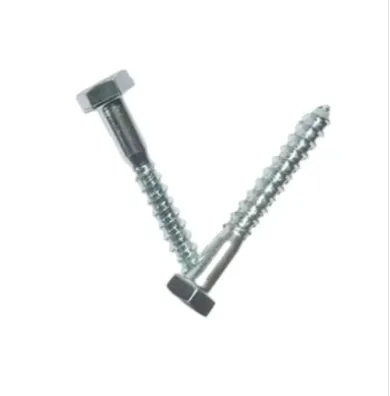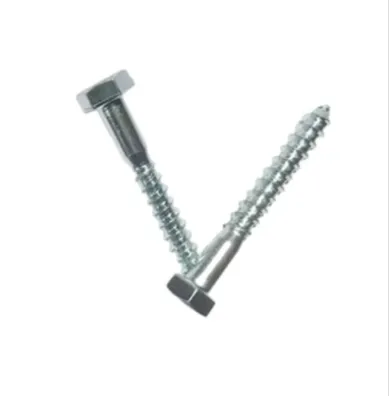jul. . 06, 2025 07:00 Back to list
Eye Bolt Concrete Sleeve Anchors - Secure & Easy Installation for Concrete Block Applications
- Introduction to Eye Bolt Concrete Sleeve Anchors: Core Features and Applications
- Technical Advantages of Using Sleeve Anchors in Concrete
- Market Comparison: Leading Manufacturers and Performance Data
- Custom Solutions for Unique Construction Requirements
- Application Examples in Industry and Infrastructure
- Expert Recommendations for Installation and Longevity
- Conclusion: Choosing the Right Eye Bolt Concrete Sleeve Anchors for Your Project

(eye bolt concrete sleeve anchors)
Introduction to Eye Bolt Concrete Sleeve Anchors: Core Features and Applications
Eye bolt concrete sleeve anchors have emerged as a pivotal anchoring solution for securing fixtures into concrete, masonry, or block substrates. Designed to couple the robust load-bearing capabilities of eye bolts with the expansive gripping mechanics of sleeve anchors, these fasteners cater to diverse industrial and commercial fastening demands. Predominantly used in structural rigging, support installations, and safety anchoring, their design allows for a secure fix without compromising the structural material’s integrity. Applications range from suspending HVAC systems in commercial buildings to securing cable trays in data centers and even safety tie-backs for fall protection. With their rising presence across global infrastructure projects and renovation works, understanding the nuances of these anchors is imperative for selecting the optimal hardware and ensuring long-term performance.
Technical Advantages of Using Sleeve Anchors in Concrete
Innovative engineering underpins the technical superiority of sleeve anchors when deployed in concrete. The expansion sleeve, typically formed from a corrosion-resistant metal such as zinc-plated steel, stainless steel, or hot-dip galvanized steel, ensures secure locking with the substrate upon tightening. This expansion creates a mechanical interlock, distributing load stress across a broader surface area to minimize local concrete cracking. Modern sleeve anchors for concrete block present tensile load capacities ranging from 1,200 to 4,500 lbs (depending on diameter and embedment depth), with shear strength values frequently surpassing 2,500 lbs, outperforming conventional wedge and drop-in anchors in comparable applications. Their ease of installation, requiring minimal tooling—often a hammer drill and torque wrench—adds remarkable efficiency on job sites. Recent laboratory testing reveals that premium-grade sleeve anchors can withstand seismic load cycling and temperature fluctuations from -40°F to 180°F, accentuating their reliability in mission-critical installations.
Market Comparison: Leading Manufacturers and Performance Data
The competitive landscape for eye bolt concrete sleeve anchors
is defined by a handful of dominant global manufacturers, each bringing unique strengths to their product lines. Below is a comparative snapshot capturing technical specifications and performance metrics that matter most in construction and engineering procurement decisions:
| Manufacturer | Anchor Material | Diameter Range | Tensile Strength (lbs) | Corrosion Resistance | Average Install Time (min) |
|---|---|---|---|---|---|
| Hilti | 316 Stainless Steel | 1/4" - 3/4" | 4,200 | Excellent (Salt Spray Tested: 1,000+ hrs) | 3.5 |
| Simpson Strong-Tie | Hot-Dip Galvanized Steel | 3/8" - 5/8" | 3,700 | High (Salt Spray Tested: 800 hrs) | 4.0 |
| Powers | Zinc-Plated Steel | 1/4" - 1/2" | 3,000 | Moderate (Salt Spray Tested: 500 hrs) | 3.2 |
| ITW Red Head | Carbon Steel (Coated) | 1/4" - 3/4" | 4,100 | Very High (Salt Spray Tested: 900+ hrs) | 3.7 |
As shown, 316 stainless steel models from brands like Hilti deliver superior corrosion protection and highest tensile values, ideal for coastal or high-humidity installations. Customization in shank length, cone design, and head diameter can further refine anchor performance for specific project site requirements, making manufacturer selection a crucial phase in the specification process.
Custom Solutions for Unique Construction Requirements
While standard sleeve anchors cover the majority of basic construction fastening needs, bespoke solutions are often indispensable for projects with atypical load demands, substrate compositions, or environmental exposures. Manufacturers now offer configurable eye bolt sleeve anchor solutions, with options for customized eye diameters, longer sleeve lengths for increased embedment, and variable expansion mechanisms to suit everything from high-density reinforced concrete to lightweight concrete block. For projects in corrosive environments, such as chemical plants or marine dock infrastructure, suppliers provide anchors with fluoropolymer coatings or solid stainless steel construction—offering up to 10x the lifecycle durability of traditional zinc-plated units. Load-rated certification and project-specific testing support risk mitigation, especially in public works and critical utility sectors. Additionally, BIM integration and 3D modeling allow construction engineers to precisely match anchor geometry to digital design models, improving project efficiency and error reduction.
Application Examples in Industry and Infrastructure
Across multiple industries, the application of eye bolt concrete sleeve anchors underpins vital structural and safety-critical installations. In energy infrastructure, sleeve anchors have been leveraged to secure transformer lifting lugs, rated to support up to 4,000 lbs per anchor, ensuring compliance with rigorous safety codes. In commercial construction, data from the American Concrete Institute (ACI) highlights sleeve anchors as the fastener of choice for securing suspended HVAC ductwork, demonstrating a 30% reduction in installation time and maintenance incidents versus legacy anchor styles. Transport hubs and stadium build-outs routinely specify eye bolt anchors for suspending digital signage and access equipment, with installed units maintaining load stability through millions of passenger cycles annually. Mining facilities rely on heavy-duty variants, tested to endure both dynamic shock loads and chemical corrosion, extending operational safety intervals by several years. These case studies illustrate not only the mechanical reliability but also the transformative workflow efficiencies unlocked by advances in sleeve anchor engineering.
Expert Recommendations for Installation and Longevity
Success with installing sleeve anchors in concrete hinges on meticulous site preparation, correct sizing, and progressive torque application. Professional installers recommend drilling precision-tolerance holes at 90-degree angles to the substrate using carbide-tipped rotary bits. Depth of embedment should meet or exceed manufacturer specifications—typically between 1.5 and 3 inches—to fully activate the expansion sleeve. Post-insertion, anchors must be tightened to the prescribed torque, often between 15 and 50 ft-lbs, to achieve optimal expansion without over-stressing the concrete. For sleeve anchors for concrete block applications, it is crucial to avoid setting in voids or mortar joints to prevent premature failure. Routine inspection post-installation—especially in critical load-bearing or exterior applications—mitigates corrosion or fatigue-related issues and extends the anchor’s service life. Industry benchmarks suggest a biennial torque test in high-vibration or seismic-prone environments to maintain maximum holding strength.
Conclusion: Choosing the Right Eye Bolt Concrete Sleeve Anchors for Your Project
In summary, eye bolt concrete sleeve anchors stand at the forefront of anchoring solutions, uniting high load capacity, adaptability, and installation efficiency for both conventional and complex build environments. By carefully weighing technical requirements, evaluating manufacturer capabilities, and considering available customizations, project engineers and builders can select sleeve anchors that not only satisfy but exceed operational and safety standards. Real-world applications—from infrastructure megaprojects to specialized industrial retrofits—testify to their resilient performance and multi-scenario versatility. Ultimately, a methodical approach to product selection and installation will maximize returns and elevate safety for years to come.

(eye bolt concrete sleeve anchors)


